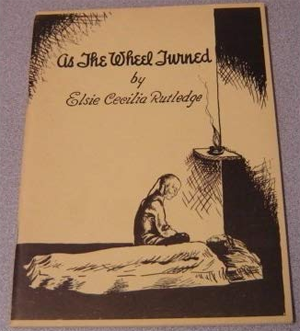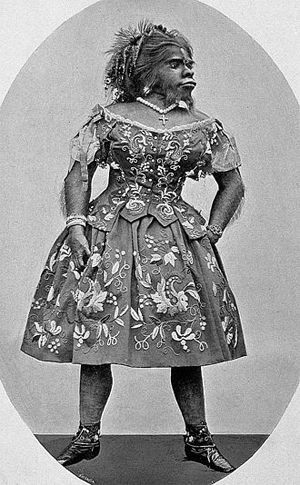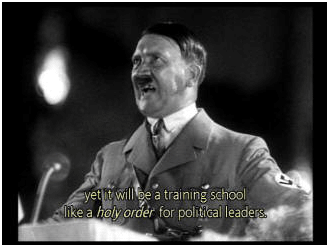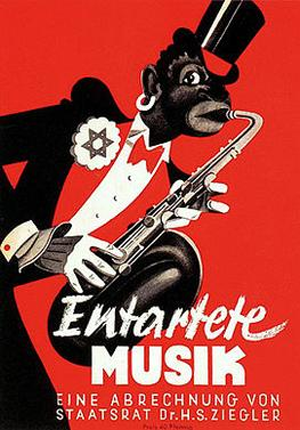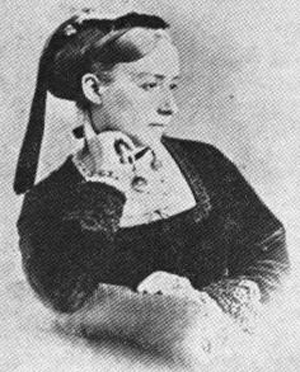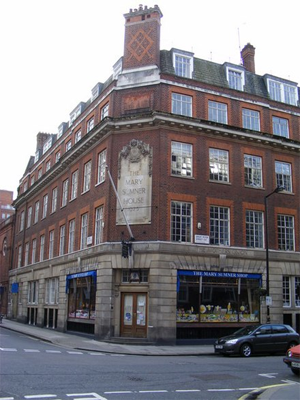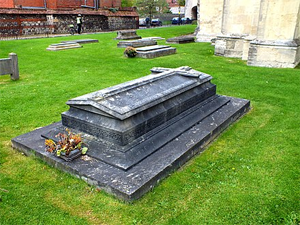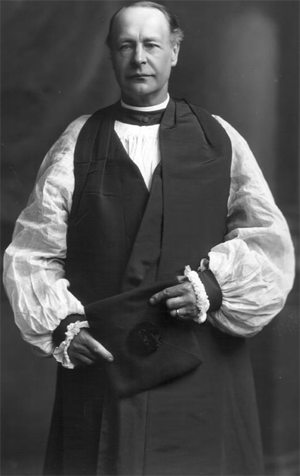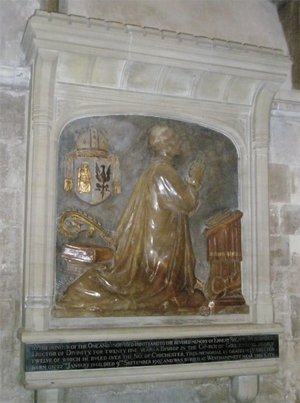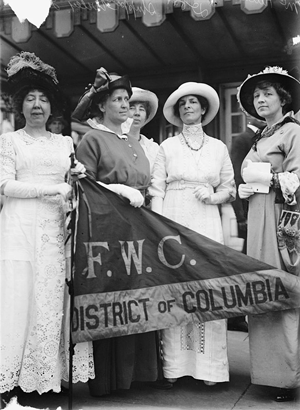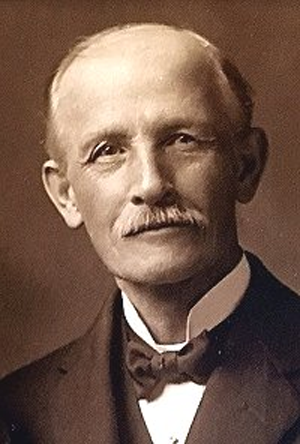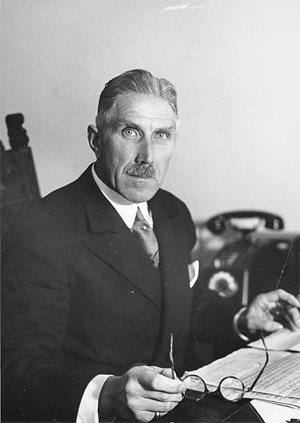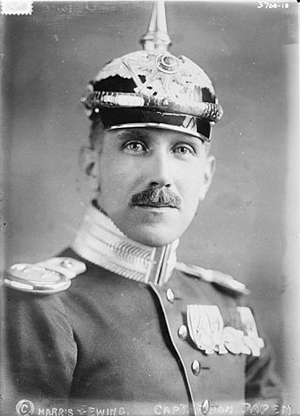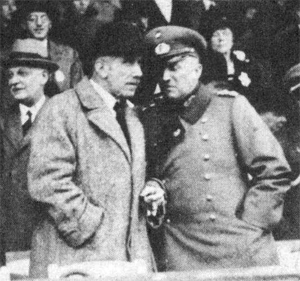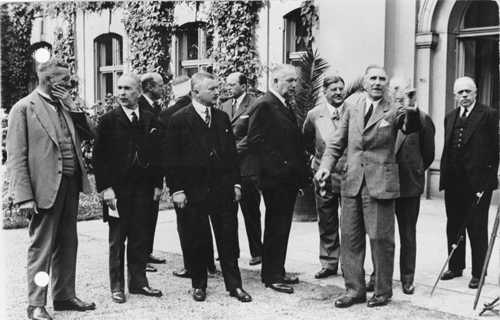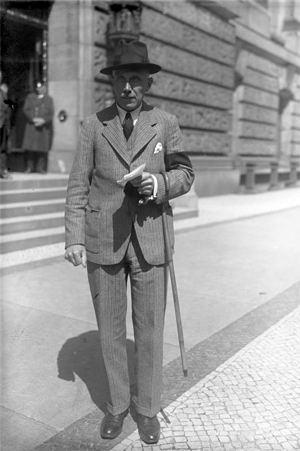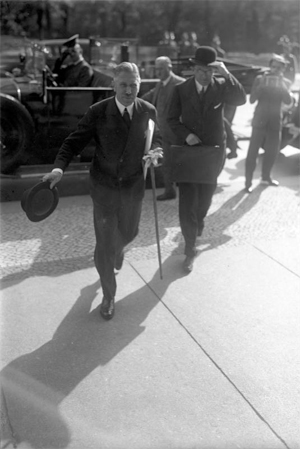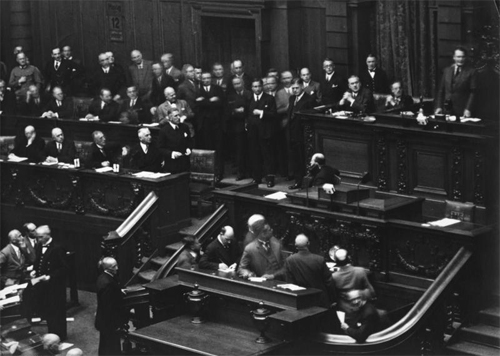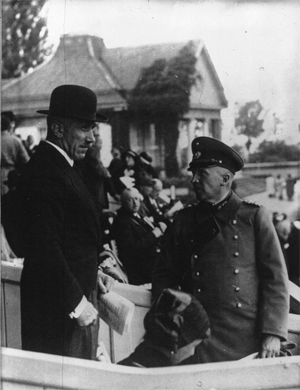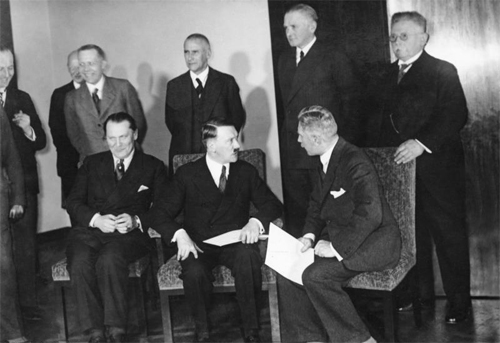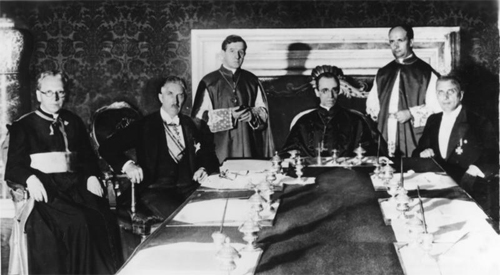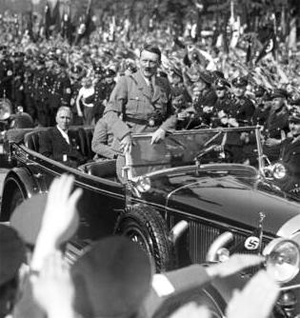Re: Freda Bedi Cont'd (#2)
Part 1 of 2
America, Birthplace of a New Race
by Geoffrey Hodson
Published by the Mothers’ Research Group, Theosophical Society in America
The Theosophical Publishing House, Chennai. India
CHAPTER 1: A NEW RACE AND A NEW AGE NOW BEING BORN
THE FUTURE OF MAN
Has mankind reached the peak of its possible development in modern leaders of men? Is the human race evolving, improving and unfolding greater powers? Will the present civilization decline and fall, as its predecessors have done? These are vital problems. Theosophy makes a valuable contribution towards their solution.
THE COST OF WAR
In the lifetime of most of us, humanity has lived through years of the most diabolical evil the world has ever known. Estimates of the extent of the sufferings of humanity in the recent years of the Second World War are now available. The latest figures tell that forty-two and one-half millions of people have died prematurely in these ten years. Nearly twenty-five millions were civilian and nineteen and one-half millions were military deaths. These forty-two and one-half millions were men, women and children who were starved, tortured, shot, blown to bits, vivisected, frozen and gassed to death. They were deliberately murdered by every conceivable method of fiendish cruelty at the hands of supposedly civilized, cultured and mostly Christian Nations.
Since the end of the Second World War, the Nations have sought unsuccessfully for that international unity and solidarity for which the great majority are longing. Thus far humanity seeks in vain to satisfy its growing hunger for wholeness, its longing for friendship, peace and security. Like twin swords of Damocles, atomic and bacteriological warfare hang over every Race, city and home on earth. In the face of these tragic facts men might well despair, not only of world peace in our time, but of the whole future of the Race.
THE EVOLUTIONARY PLAN
What has Theosophy to offer to mankind at this juncture and in this hour of urgent need? The answer is guiding principles, knowledge of which is all-important, especially for those who aspire to play an effective part in the present world crisis. Theosophy provides that knowledge; for its study mentally lifts one to great heights from which a panoramic view of human life is possible. Theosophy reveals the master plan, one part of which concerns the evolution of the human Race. The total number of major Races is said to be seven, each of which is composed of seven successive sub-races. Five major Races have already appeared on earth, the Aryan peoples belonging to the fifth. Two Root Races lie in the future. Five sub-races of the fifth, the Aryan Race, have already appeared and a sixth is now being born. From this theosophical teaching we learn that we, being in the fifth of the seven Root Races, are rather more than half way through our planet's life.
When considering racial evolution upon earth it should be remembered that the same spiritual individuals, the same human Egos incarnate in the successive races. The Atlanteans, the Egyptians and the other ancient peoples were none other than ourselves. Similarly, the sixth sub-race and the sixth and seventh Root Races will only be new reincarnations of the same family of Egos, ourselves, for whom this earth has been appointed as the evolutionary field.
BIRTHPLACES OF A NEW RACE
What, then, is the place of Australia in this great plan and what is the destiny of its peoples? Simply put, the answer is that the fifth Race is at this time producing a sixth sub-race, and the four countries of North America and Canada, South Africa, Australia and New Zealand are the chief places of its birth. The sixth sub-race of the mother Aryan stock is being produced by emigration of European peoples, chiefly British, to the new racial homes. Even now the plan is well advanced. Each of the four countries is already producing its typical variant of the new type. Indeed, the two World Wars may be regarded as both the death throes of an old dispensation and the birth pangs of a new.
THE COMING RACE
What will New Age man look like? Here is the young man. In Australia he is tall, wiry and somewhat slender of form. In New Zealand the build has perhaps been somewhat shorter and stockier up to now, though an increase in the height is said to be occurring. The facial features of the sixth sub-race man, when they do show, are everywhere much the same. They are finely modeled, the nose tends to be long, the chin pointed and the forehead broad, thus making the face somewhat triangular. A certain eagerness, a vivid alertness, is stamped upon the whole face.
The women will especially display the quality of grace. They, too, will be slender and athletic, and the ideal of physical beauty and perfection will make great appeal to them. Again, the face will be triangular, the head pear-shaped, the features becoming clear-cut, regular and more and more refined as the new racial type is established. The texture of the skin will be notably fine and the hands and feet are beautifully formed. So much for apparent physical trends.
What of the outlook? This also must be considered; for, from the point of view of recent world events and the grave danger of a Third World War, the attitude of mind and the outlook of the new racial type are all important. Can we forecast them? Yes. The new psychological characteristics may be discerned by a study of advanced people throughout the world; for this new Race is not to be born in a single place, not to belong to a single Nation. It is the type of the new humanity which will seek unity and co-operation between free individuals and Nations. The very essence of all action in the sixth sub-race will be the union of many to achieve a single object, and not the dominance of one who compels others to his will. To advance together in freedom to a goal that all realize as desirable, will ultimately become the method of attainment. This tendency to unity of action is one of the signs of racial evolution out of dependence upon mental processes, analysis, deduction and logic into the use of direct intuitive perception.
MANKIND'S WILL TO WORLD UNITY
Despite grave difficulties at present appearing, signs are not wanting that this development is actually occurring. Indeed, it is abundantly evident today; for, amid the welter of conflicting peoples and ideologies now evident, there is distinctly discernible a subtle yet powerful change occurring in the outlook of mankind upon the planet -- the growth of one dominating idea with tremendous possibilities for the future. This change has been described as "a hunger for wholeness", and it is indeed a revolutionary event. It is almost comparable to a geological cataclysm, like the tilting of the earth's axis or a descent of an ice cap. It must culminate, I suggest, in an irresistible will to world unity.
This recognition of unity and determination to achieve it characteristic of New Age man will not only be physical and racial, but mental and spiritual as well. Also, it will not only be local, but world-wide. Even now, this unifying tendency is discernible in the world and constitutes a definite sign of the emergence of the sixth sub-race of the Fifth, the Aryan Race.
If one is looking for signs that any particular person is beginning to show marks of that sixth sub-race today, such signs may be found in a growing intuitiveness and in a capacity to lead by love, sympathy and comprehension rather than by the dominance of an imperious will; for, to advanced humanity, dominance is anathema, freedom is a veritable religion. A synthesizing spirit will be found in the fore-runners of the sixth sub-race. They will be able to encourage and to unite diversity of opinion and of character, to gather round them the most unlike elements and blend them, whilst still free, into a common whole.
MAN CALLED TO COLLABORATE IN THE TRANSCENDENTAL TASK
Those who at present possess the capacity for taking into themselves diversities and sending them out again as unities, and for utilizing the most different individualities, finding each its place in freedom and welding all together into a strong whole -- such people already display New Race characteristics. The ideal, as will be seen, is not a universalized set of conditions and a uniformity of human personality, but full individual development with readiness to combine and to co-operate in the great causes of human happiness and progress.
Theosophy adds to the statement of this far-reaching plan that every individual can participate in the progress of the Race. Each one of us is important; for each of us can help or hinder the historical process. If each one of us will play our constructive part, if we can inspire our young people with the vision of themselves as Nation-builders, then America, Canada, South Africa, Australia and New Zealand will fulfill their present promise of rapid advance to magnificent nationhood.
In the light of such teachings of Theosophy, the truly alarming portents to which I drew attention at the beginning of this Talk assume a less menacing aspect, dangerous though they are. The student of Theosophy need not fear that any futility overshadows man's highest dreams; he need not be afraid that civilization will be allowed up in unheeding, everlasting night; for he is taught that man moves through innumerable ages to ever-in-creasing power, wisdom and glory.
CHAPTER 2: THE CHILDREN OF TODAY ARE THE CITIZENS OF TOMORROW
THE INFLUENCE OF EDUCATION
The problem which I am now going to discuss is that of good citizenship and bad citizenship, particularly in the young people of today. Reports and statistics emanating from many countries and sources demonstrate that all is not as it should be with modern youth.
"Poets are born, not made", it is said, but good citizens are made, not born, and the same is true of bad citizens. Moral laxity in youth is largely the result of deficient education at home and at school and of pernicious influences out in the world. In consequence, idealists are visualizing an educational system with the main objectives of developing human character and of producing good citizens of the home, the school, the city, the Nation and the world. Advanced thinkers have long been proclaiming the urgent need for education for character-building, stability and integrity. They seek to imbue young people with a strong moral sense and a vision of excellence. Education for successful living and for useful citizenship, including public service, is now being regarded as both the key to the New World Order and the life blood of civilization.
Education is of two parts — in school and out of school. At present these two influences upon the growing child tend to become divorced. Teachers state that the good they try to do in the school is all too often undone at home and out in the world. In-school and out-of-school education should be co-ordinated, otherwise the one nullifies the other. The home will then widen naturally into the school which in its turn becomes both an extension of the home and a natural gateway to adult life.
MORAL DANGERS
The grave dangers confronting youth after leaving school arise from contact with adult materialism, selfishness, commercialism and vice. Girls and boys go out into life without the necessary guidance and protection against moral danger and insufficiently supported by belief in spiritual and moral principles. In consequence, they are often helpless in the presence of the evils and tendencies to evil which surround them in the world.
RADIO AND CINEMA
Broadcasting is one example of these dangers. The radio penetrates every home. Every child from babyhood is exposed to it. Sensational stories, luring advertisements, moronic crooning and raucous jazz pour out of loudspeakers throughout the Nations. To combat this very serious evil, a due censorship is urgently needed, with the single purpose of producing good citizens.
Advertising may be taken as another example. The newspapers, the hoardings, the handbills, and some of the radio stations of the world are designed for advertising. This almost hypnotic procedure beats upon the consciousness of modern man, influencing thought and word and deed. The adult gradually acquires a self-defense against this perpetual battering. Unfortunately that defense is cynicism. But the child does not know any better and is inevitably affected, deceived, moulded. The predominant motive of commercial advertising is to get, to acquire, to deceive, to persuade, to allure one's fellow men. It is selfish, acquisitive. The child tends to conclude that cleverness in deceit for personal profit wins the world's greatest prizes. He absorbs this attitude towards life, gravely to his detriment, thinking of success in purely worldly terms and material values.
Many children are thus spoilt, marred as potential good citizens. They are sent out into life with a strong desire to advertise themselves, to sell themselves, their education, their scholastic degrees, their highest gifts, for money, power, possessions. Thus the young people of today are being moulded by adults into selfish embodiments of a ravenous passion for getting things. Of religion, of the Divine Presence, they know naught. Their minds are not spiritually moulded. [From Reader’s Digest, USA] A radio announcer's daughter when asked to say grace spoke forth easily: “This food comes to us by courtesy of God Almighty." A story is told of another child who, when shown by her mother her first rainbow, immediately asked: "What is it supposed to advertise?"
America, Birthplace of a New Race
by Geoffrey Hodson
Published by the Mothers’ Research Group, Theosophical Society in America
The Theosophical Publishing House, Chennai. India
Freda was concerned that the Indian authorities simply didn't understand the tradition of incarnate lamas, and their critical place in Tibetan society and spiritual practice. Little was done to identify these young lamas, some little more than infants. 'Nobody knew quite what to do with them,' Freda lamented to Olive Shapley. 'In the lamas we have inherited a tradition that dates back to the seventh century -- spiritual richness we can only as yet partially realise,' she wrote to friends. 'I am sure the whole world will ultimately be enriched.'There are perhaps 200 high 'incarnate' lamas in the country now headed by His Holiness [the Dalai Lama] (including 40-60 child or adolescent incarnations: many of them young people of extraordinary intelligence and physical beauty) ... dedicated monks and lamas of a high standard of learning and spirituality number perhaps 2,500; in addition we have junior and simpler country monks, over 1,500 of whom have volunteered for roadwork. We all pray ultimately we may be able to settle the bulk of the refugees in big land settlements.32
Nehru had taken a diplomatic risk by hosting the Dalai Lama and tens of thousands of those who followed in his wake. But there was a limit to the amount of official support and funding that could be expected for the refugees' welfare, with the most urgent and unmet need being the upkeep and education of the young lamas.
Freda was entirely comfortable soliciting money and support from the rich and well connected. She had also established links with Buddhist and similar groups in London and elsewhere. Within weeks of returning to Delhi from the camps, she sought to turn her extensive network to the Tibetans' advantage. In mid-August 1960, she wrote a long letter to Muriel Lewis, a California-based Theosophist with whom she had corresponded for several years. Muriel ran the Mothers' Research Group principally for American and Western Theosophists, a network which had an interest both in eastern religions and in parenting issues.I should like to feel that the 'Mothers' Group' was in touch with all I do (Freda wrote). Do you think it would be possible for some of your members to 'Adopt' in a small way -- write to, send parcels to -- these junior lamas? Friendships, even by post, could mean a great deal. We could work out a little scheme, if you are interested. The language barrier is there, but we can overcome it, with the help of friends.
Freda's family had, she recounted, already taken a young lama under their wing.Last year my son [Kabir] 'adopted' one small lama of 12, sent him a parcel of woollen (yellow)clothes, sweets and picture books, soap and cotton cloth. This time when I went to Buxa, Jayong gave me such an excited and dazzling smile. He was brimming over with joy at seeing me again! It is very quiet away from your own country and relations for a small lama with a LOT TO LEARN. It was of course most touching to see the 'Mother-Love' in the faces of the tutor-lamas and servant lamas who look after the young ones. They are very tender with them.
Freda's letter was included in Muriel's research group newsletter and subsequently reprinted by the Buddhist Society in London. This was the founding act of the Tibetan Friendship Group, which quickly established a presence in eight western countries and was the conduit by which modest private funds were raised for the refugees.34 It outlasted Freda and ... it helped give prominence to the Tibet issue as well as the well-being of the Tibetan diaspora.
-- The Lives of Freda: The Political, Spiritual and Personal Journeys of Freda Bedi, by Andrew Whitehead
CHAPTER 1: A NEW RACE AND A NEW AGE NOW BEING BORN
THE FUTURE OF MAN
Has mankind reached the peak of its possible development in modern leaders of men? Is the human race evolving, improving and unfolding greater powers? Will the present civilization decline and fall, as its predecessors have done? These are vital problems. Theosophy makes a valuable contribution towards their solution.
THE COST OF WAR
In the lifetime of most of us, humanity has lived through years of the most diabolical evil the world has ever known. Estimates of the extent of the sufferings of humanity in the recent years of the Second World War are now available. The latest figures tell that forty-two and one-half millions of people have died prematurely in these ten years. Nearly twenty-five millions were civilian and nineteen and one-half millions were military deaths. These forty-two and one-half millions were men, women and children who were starved, tortured, shot, blown to bits, vivisected, frozen and gassed to death. They were deliberately murdered by every conceivable method of fiendish cruelty at the hands of supposedly civilized, cultured and mostly Christian Nations.
Since the end of the Second World War, the Nations have sought unsuccessfully for that international unity and solidarity for which the great majority are longing. Thus far humanity seeks in vain to satisfy its growing hunger for wholeness, its longing for friendship, peace and security. Like twin swords of Damocles, atomic and bacteriological warfare hang over every Race, city and home on earth. In the face of these tragic facts men might well despair, not only of world peace in our time, but of the whole future of the Race.
THE EVOLUTIONARY PLAN
What has Theosophy to offer to mankind at this juncture and in this hour of urgent need? The answer is guiding principles, knowledge of which is all-important, especially for those who aspire to play an effective part in the present world crisis. Theosophy provides that knowledge; for its study mentally lifts one to great heights from which a panoramic view of human life is possible. Theosophy reveals the master plan, one part of which concerns the evolution of the human Race. The total number of major Races is said to be seven, each of which is composed of seven successive sub-races. Five major Races have already appeared on earth, the Aryan peoples belonging to the fifth. Two Root Races lie in the future. Five sub-races of the fifth, the Aryan Race, have already appeared and a sixth is now being born. From this theosophical teaching we learn that we, being in the fifth of the seven Root Races, are rather more than half way through our planet's life.
When considering racial evolution upon earth it should be remembered that the same spiritual individuals, the same human Egos incarnate in the successive races. The Atlanteans, the Egyptians and the other ancient peoples were none other than ourselves. Similarly, the sixth sub-race and the sixth and seventh Root Races will only be new reincarnations of the same family of Egos, ourselves, for whom this earth has been appointed as the evolutionary field.
BIRTHPLACES OF A NEW RACE
What, then, is the place of Australia in this great plan and what is the destiny of its peoples? Simply put, the answer is that the fifth Race is at this time producing a sixth sub-race, and the four countries of North America and Canada, South Africa, Australia and New Zealand are the chief places of its birth. The sixth sub-race of the mother Aryan stock is being produced by emigration of European peoples, chiefly British, to the new racial homes. Even now the plan is well advanced. Each of the four countries is already producing its typical variant of the new type. Indeed, the two World Wars may be regarded as both the death throes of an old dispensation and the birth pangs of a new.
THE COMING RACE
What will New Age man look like? Here is the young man. In Australia he is tall, wiry and somewhat slender of form. In New Zealand the build has perhaps been somewhat shorter and stockier up to now, though an increase in the height is said to be occurring. The facial features of the sixth sub-race man, when they do show, are everywhere much the same. They are finely modeled, the nose tends to be long, the chin pointed and the forehead broad, thus making the face somewhat triangular. A certain eagerness, a vivid alertness, is stamped upon the whole face.
The women will especially display the quality of grace. They, too, will be slender and athletic, and the ideal of physical beauty and perfection will make great appeal to them. Again, the face will be triangular, the head pear-shaped, the features becoming clear-cut, regular and more and more refined as the new racial type is established. The texture of the skin will be notably fine and the hands and feet are beautifully formed. So much for apparent physical trends.
What of the outlook? This also must be considered; for, from the point of view of recent world events and the grave danger of a Third World War, the attitude of mind and the outlook of the new racial type are all important. Can we forecast them? Yes. The new psychological characteristics may be discerned by a study of advanced people throughout the world; for this new Race is not to be born in a single place, not to belong to a single Nation. It is the type of the new humanity which will seek unity and co-operation between free individuals and Nations. The very essence of all action in the sixth sub-race will be the union of many to achieve a single object, and not the dominance of one who compels others to his will. To advance together in freedom to a goal that all realize as desirable, will ultimately become the method of attainment. This tendency to unity of action is one of the signs of racial evolution out of dependence upon mental processes, analysis, deduction and logic into the use of direct intuitive perception.
MANKIND'S WILL TO WORLD UNITY
Despite grave difficulties at present appearing, signs are not wanting that this development is actually occurring. Indeed, it is abundantly evident today; for, amid the welter of conflicting peoples and ideologies now evident, there is distinctly discernible a subtle yet powerful change occurring in the outlook of mankind upon the planet -- the growth of one dominating idea with tremendous possibilities for the future. This change has been described as "a hunger for wholeness", and it is indeed a revolutionary event. It is almost comparable to a geological cataclysm, like the tilting of the earth's axis or a descent of an ice cap. It must culminate, I suggest, in an irresistible will to world unity.
This recognition of unity and determination to achieve it characteristic of New Age man will not only be physical and racial, but mental and spiritual as well. Also, it will not only be local, but world-wide. Even now, this unifying tendency is discernible in the world and constitutes a definite sign of the emergence of the sixth sub-race of the Fifth, the Aryan Race.
If one is looking for signs that any particular person is beginning to show marks of that sixth sub-race today, such signs may be found in a growing intuitiveness and in a capacity to lead by love, sympathy and comprehension rather than by the dominance of an imperious will; for, to advanced humanity, dominance is anathema, freedom is a veritable religion. A synthesizing spirit will be found in the fore-runners of the sixth sub-race. They will be able to encourage and to unite diversity of opinion and of character, to gather round them the most unlike elements and blend them, whilst still free, into a common whole.
Many of [Guido von] List's essays endorsed health food fads, herbal cures, and Baron Karl von Reichenbach's Theory of Odic Force.
His fetish for the natural extended to politics. Real nationhood could only be based on blood ties, or "soul relationship." The ideal state must be a Volksgemeinshaft (folk-union or spiritual brotherhood) consisting of genetically-related people who would function as an extended family because of blood-compatibility, "soul-connection," and implicitly shared values. True patriotism had biological as well as spiritual roots. It was simply a higher form of family loyalty, and fraternal affection among Aryan receivers of "God-Knowledge."
-- Hitler's Mentor: Dietrich Eckart, His Life, Times, & Milieu, by Joseph Howard Tyson
Now the evolution of the external form or body round the astral is produced by the terrestrial forces, just as in the case of the lower kingdoms; but the evolution of the internal or real MAN is purely spiritual. It is now no more a passage of the impersonal Monad through many and various forms of matter — endowed at best with instinct and consciousness on quite a different plane — as in the case of external evolution, but a journey of the “pilgrim-soul” through various states of not only matter but Self-consciousness and self-perception, or of perception from apperception. (See “Gods, Monads and Atoms.”)
-- The Secret Doctrine: The Synthesis of Science, Religion, and Philosophy, by Helena P. Blavatsky
MAN CALLED TO COLLABORATE IN THE TRANSCENDENTAL TASK
Those who at present possess the capacity for taking into themselves diversities and sending them out again as unities, and for utilizing the most different individualities, finding each its place in freedom and welding all together into a strong whole -- such people already display New Race characteristics. The ideal, as will be seen, is not a universalized set of conditions and a uniformity of human personality, but full individual development with readiness to combine and to co-operate in the great causes of human happiness and progress.
Theosophy adds to the statement of this far-reaching plan that every individual can participate in the progress of the Race. Each one of us is important; for each of us can help or hinder the historical process. If each one of us will play our constructive part, if we can inspire our young people with the vision of themselves as Nation-builders, then America, Canada, South Africa, Australia and New Zealand will fulfill their present promise of rapid advance to magnificent nationhood.
In the light of such teachings of Theosophy, the truly alarming portents to which I drew attention at the beginning of this Talk assume a less menacing aspect, dangerous though they are. The student of Theosophy need not fear that any futility overshadows man's highest dreams; he need not be afraid that civilization will be allowed up in unheeding, everlasting night; for he is taught that man moves through innumerable ages to ever-in-creasing power, wisdom and glory.
CHAPTER 2: THE CHILDREN OF TODAY ARE THE CITIZENS OF TOMORROW
THE INFLUENCE OF EDUCATION
The problem which I am now going to discuss is that of good citizenship and bad citizenship, particularly in the young people of today. Reports and statistics emanating from many countries and sources demonstrate that all is not as it should be with modern youth.
"Poets are born, not made", it is said, but good citizens are made, not born, and the same is true of bad citizens. Moral laxity in youth is largely the result of deficient education at home and at school and of pernicious influences out in the world. In consequence, idealists are visualizing an educational system with the main objectives of developing human character and of producing good citizens of the home, the school, the city, the Nation and the world. Advanced thinkers have long been proclaiming the urgent need for education for character-building, stability and integrity. They seek to imbue young people with a strong moral sense and a vision of excellence. Education for successful living and for useful citizenship, including public service, is now being regarded as both the key to the New World Order and the life blood of civilization.
Education is of two parts — in school and out of school. At present these two influences upon the growing child tend to become divorced. Teachers state that the good they try to do in the school is all too often undone at home and out in the world. In-school and out-of-school education should be co-ordinated, otherwise the one nullifies the other. The home will then widen naturally into the school which in its turn becomes both an extension of the home and a natural gateway to adult life.
MORAL DANGERS
The grave dangers confronting youth after leaving school arise from contact with adult materialism, selfishness, commercialism and vice. Girls and boys go out into life without the necessary guidance and protection against moral danger and insufficiently supported by belief in spiritual and moral principles. In consequence, they are often helpless in the presence of the evils and tendencies to evil which surround them in the world.
RADIO AND CINEMA
Broadcasting is one example of these dangers. The radio penetrates every home. Every child from babyhood is exposed to it. Sensational stories, luring advertisements, moronic crooning and raucous jazz pour out of loudspeakers throughout the Nations. To combat this very serious evil, a due censorship is urgently needed, with the single purpose of producing good citizens.
There are no sports at European Waldorf schools and no jazz or popular music; these phenomena are considered to harbor demonic forces. Instead students read fairy tales, a staple of Waldorf education.
As the Wheel Turned: Tales of a Child Who Lived in the Long Ago, by Elsie Cecilia Rutledge, Publisher: Mothers' Research Group/Parents Theosophical Research Group: 1952
-- Anthroposophy and Ecofascism, by Peter Staudenmaier
Negermusik ("Negro Music") was a pejorative term used by the Nazis during the Third Reich to signify musical styles and performances by African-Americans that were of the jazz and swing music genres. They viewed these musical styles as inferior works belonging to an "inferior race" and therefore prohibited. The term, at that same time, was also applied to indigenous music styles of black Africans....
Their criticisms have included "gratuitous use of syncopation" and "orgies of drums"....On 4 May 1930, Wilhelm Frick, the Reich's newly appointed Minister of the Interior and Education for Thuringia made a decree called "Against the Negro Culture — For Our German Heritage".
In 1932 the national government under Franz von Papen pandered to the Nazis by banning all public performances by black musicians. After Adolf Hitler gained power in 1933, the Reich's Music Chamber was also created in that same year. This was then followed by a full legal ban on this music on October 12, 1935 across all German national radio....
Prior to the D-Day landings, during the German occupation of the Netherlands, Joseph Goebbels's propaganda ministry published pamphlets written in Dutch named "Greetings from England -– The Coming Invasion". These pamphlets contained in-between statements, such as "old jazz-records" and a further full statement declaring "at the celebration of liberation your daughters and wives will be dancing in the arms of real Negroes"....
Even in the Post–World War II years in 1950s Germany, there were some protests from churches, school authorities and politicians against the "obscene Negro music" of the newly emerging rock 'n' roll genre with such acts like Elvis and Chuck Berry gaining new popularity amongst youth. This attitude also continued right up into the 1960s carrying the same derogatory term that not only maintained its resentment by older generations and conservatives but also was an aggressive defense against a then new contemporary American culture. Dance halls in East-Germany often displayed "Affentanzen verboten" notices (lit.: monkey dancing forbidden).
-- Negermusik [Negro Music], by Wikipedia
[T]he astral prototypes of the lower beings of the animal kingdom of the Fourth Round, which preceded (the chhayas of) Men, were the consolidated, though still very ethereal sheaths of the still more ethereal forms or models produced at the close of the Third Round on Globe D. [215] “Produced from the residue of the substance matter; from dead bodies of men and (other extinct) animals of the wheel before,” or the previous Third Round — as Stanza 24 tells us. Hence, while the nondescript “animals” that preceded the astral man at the beginning of this life-cycle on our Earth were still, so to speak, the progeny of the man of the Third Round, the mammalians of this Round owe their existence, in a great measure, to man again. Moreover, the “ancestor” of the present anthropoid animal, the ape, is the direct production of the yet mindless Man, who desecrated his human dignity by putting himself physically on the level of an animal….
Ay, but that “primeval man” was man only in external form. He was mindless and soulless at the time he begot, with a female animal monster, the forefather of a series of apes….
Perchance in these specimens, Haeckelians might recognize, not the Homo primigenius, but some of the lower tribes, such as some tribes of the Australian savages. Nevertheless, even these are not descended from the anthropoid apes, but from human fathers and semi-human mothers, or, to speak more correctly, from human monsters — those “failures” mentioned in the first Commentary. The real anthropoids, Haeckel’s Catarrhini and Platyrrhini, came far later, in the closing times of Atlantis. The orang-outang, the gorilla, the chimpanzee and cynocephalus are the latest and purely physical evolutions from lower anthropoid mammalians. They have a spark of the purely human essence in them; man on the other hand, has not one drop of pithecoid blood in his veins.….
These “Men” of the Third Race — the ancestors of the Atlanteans — were just such ape-like, intellectually senseless giants as were those beings, who, during the Third Round, represented Humanity. Morally irresponsible, it was these third Race “men” who, through promiscuous connection with animal species lower than themselves, created that missing link which became ages later (in the tertiary period only) the remote ancestor of the real ape as we find it now in the pithecoid family. [150]...
A naturalist suggests another difficulty. The human is the only species which, however unequal in its races, can breed together. “There is no question of selection between human races,” say the anti-Darwinists, and no evolutionist can deny the argument — one which very triumphantly proves specific unity. How then can Occultism insist that a portion of the Fourth Race humanity begot young ones from females of another, only semi-human, if not quite an animal, race, the hybrids resulting from which union not only bred freely but produced the ancestors of the modern anthropoid apes? Esoteric science replies to this that it was in the very beginnings of physical man. Since then, Nature has changed her ways, and sterility is the only result of the crime of man’s bestiality….
But this was when Africa had already been raised as a continent. We have meanwhile to follow, as closely as limited space will permit, the gradual evolution of the now truly human species. It is in the suddenly arrested evolution of certain sub-races, and their forced and violent diversion into the purely animal line by artificial cross-breeding, truly analogous to the hybridization, which we have now learned to utilize in the vegetable and animal kingdoms, that we have to look for the origin of the anthropoids. In these red-haired and hair-covered monsters, the fruit of the unnatural connection between men and animals, the “Lords of Wisdom” did not incarnate, as we see. Thus by a long series of transformations due to unnatural cross-breeding (unnatural “sexual selection”), originated in due course of time the lowest specimens of humanity; while further bestiality and the fruit of their first animal efforts of reproduction begat a species which developed into mammalian apes ages later....
For surely, it was not in or through the wickedness of the “mighty men” . . . . men of renown, among whom is placed Nimrod the “mighty hunter before the Lord,” that “god saw that the wickedness of man was great,” nor in the builders of Babel, for this was after the Deluge; but in the progeny of the giants who produced monstra quaedam de genere giganteo, monsters from whence sprang the lower races of men, now represented on earth by a few miserable dying-out tribes and the huge anthropoid apes….
The monsters bred in sin and shame by the Atlantean giants, “blurred copies” of their bestial sires, and hence of modern man (Huxley), now mislead and overwhelm with error the speculative Anthropologist of European Science…
[T]he bestiality of the primeval mindless races resulted in the production of huge man-like monsters — the offspring of human and animal parents. As time rolled on, and the still semi-astral forms consolidated into the physical, the descendants of these creatures were modified by external conditions, until the breed, dwindling in size, culminated in the lower apes of the Miocene period. With these the later Atlanteans renewed the sin of the “Mindless” — this time with full responsibility. The resultants of their crime were the species of apes now known as Anthropoid…
On the data furnished by modern science, physiology, and natural selection, and without resorting to any miraculous creation, two negro human specimens of the lowest intelligence — say idiots born dumb — might by breeding produce a dumb Pastrana species, which would start a new modified race, and thus produce in the course of geological time the regular anthropoid ape….
-- The Secret Doctrine: The Synthesis of Science, Religion, and Philosophy, by Helena P. Blavatsky
For it will be admitted that some knowledge of man’s position in the animate world is an indispensable preliminary to the proper understanding of his relations to the universe—and this again resolves itself, in the long run, into an inquiry into the nature and the closeness of the ties which connect him with those singular creatures whose history has been sketched in the preceding pages.
The importance of such an inquiry is indeed intuitively manifest. Brought face to face with these blurred copies of himself, the least thoughtful of men is conscious of a certain shock, due perhaps, not so much to disgust at the aspect of what looks like an insulting caricature, as to the awakening of a sudden and profound mistrust of time-honoured theories and strongly-rooted prejudices regarding his own position in nature, and his relations to the under-world of life; while that which remains a dim suspicion for the unthinking, becomes a vast argument, fraught with the deepest consequences, for all who are acquainted with the recent progress of the anatomical and physiological sciences.
I now propose briefly to unfold that argument, and to set forth, in a form intelligible to those who possess no special acquaintance with anatomical science, the chief facts upon which all conclusions respecting the nature and the extent of the bonds which connect man with the brute world must be based: I shall then indicate the one immediate conclusion which, in my judgment, is justified by those facts, and I shall finally discuss the bearing of that conclusion upon the hypotheses which have been entertained respecting the Origin of Man.
-- On the Relations of Man to the Lower Animals, by Thomas Henry Huxley
Advertising may be taken as another example. The newspapers, the hoardings, the handbills, and some of the radio stations of the world are designed for advertising. This almost hypnotic procedure beats upon the consciousness of modern man, influencing thought and word and deed. The adult gradually acquires a self-defense against this perpetual battering. Unfortunately that defense is cynicism. But the child does not know any better and is inevitably affected, deceived, moulded. The predominant motive of commercial advertising is to get, to acquire, to deceive, to persuade, to allure one's fellow men. It is selfish, acquisitive. The child tends to conclude that cleverness in deceit for personal profit wins the world's greatest prizes. He absorbs this attitude towards life, gravely to his detriment, thinking of success in purely worldly terms and material values.
Many children are thus spoilt, marred as potential good citizens. They are sent out into life with a strong desire to advertise themselves, to sell themselves, their education, their scholastic degrees, their highest gifts, for money, power, possessions. Thus the young people of today are being moulded by adults into selfish embodiments of a ravenous passion for getting things. Of religion, of the Divine Presence, they know naught. Their minds are not spiritually moulded. [From Reader’s Digest, USA] A radio announcer's daughter when asked to say grace spoke forth easily: “This food comes to us by courtesy of God Almighty." A story is told of another child who, when shown by her mother her first rainbow, immediately asked: "What is it supposed to advertise?"
